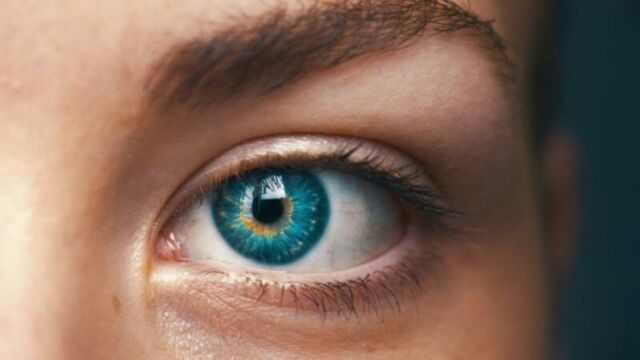Here's what your eye colour reveals about your health, and it may surprise you

Our eyes reveal a lot about us, for example, diseases can also be recognized through the iris. Here's what you should know.
Whether blue, green, brown or grey eyes - as different as the colours are, as different are we as humans. However, our eyes can be used to identify not only our mortality risk, but also certain diseases.
Discover our latest podcast
The colour of the iris is important
The colour of the iris serves as an aid. It can be used to identify risk factors 'for certain eye diseases', as t-online describes. Incidentally, according to the German Society of Ophthalmology, 90 percent of people have brown eyes, the rest have blue, gray and green eyes.
More under this adMore under this adThe reason for the discoloration is a high concentration of melanin in the iris, the 'pigment that determines the colour of the skin and hair as well as the eyes'. Professor Dr. med. Claus Cursiefen, Director of the Center for Ophthalmology at the University Hospital in Cologne explains to t-online:
The melanin always has the same brownish color - even green and blue eyes have no other pigments.More under this adMore under this ad
Melanin is responsible
According to Medscape, the other shades of color are based on 'light refraction effects that come into play with different melanin contents'. In the pigment disorder albinism, the eyes remain very light, i.e. completely without melanin. Depending on the incidence of light, the 'red background of the eye can shimmer through'.
Melanin is important for us as it protects us from sunlight by filtering 'both the visible part of the light spectrum and its UV component'. The risk of suffering from an eye disease varies depending on eye colour.
More under this adMore under this adBright eyes
People with light-colored eyes can develop the chronic disease called macular degeneration. It affects both eyes and develops in the retina. With age, vision in the area of sharp vision, i.e. the macula, is lost.
A low melanin level is typical of light-colored eyes and therefore there is a strong sensitivity to light. However, a metabolic disorder is responsible for the disease. The expert explains:
More under this adMore under this adFree radicals, oxidative stress and the accumulation of waste products in the area of the retina play a role in the development of AMD - processes that are intensified by UV light.
Tumor risk
However, this chronic disease is not unique to light-coloured eyes. People with a light eye colour tend to have an increased risk of developing 'uveal melanoma, an aggressive tumor of the uvea', according to the source.
More under this adMore under this adAlthough this type of cancer is 'very rare', it is more common in people from Europe than in people of Asian or African descent, according to Professor Dr. Nikolaos Bechrakis, Director of the Essen University Eye Clinic.
Cataracts with dark eyes
However, eye diseases are not only found in people with light-coloured eyes; a dark iris can also lead to cataracts. The clouding of the lens develops up to four times more frequently in brown eyes than in blue-eyed people. According to Cursiefen, this could be explained as follows:
More under this adMore under this adOne theory is that the more light is absorbed by the iris, the higher the temperature in the anterior chamber of the eye. [...] The examples show that seemingly insignificant factors such as eye color may well be relevant in everyday clinical practice.
Lire aussi :
⋙ What your eye colour says about your personality
⋙ This man was shocked to discover he had a wood splinter in his eye for 15 years
⋙ Doctors couldn't believe what they pulled out of this woman's eye
⋙ These are the most common signs that your child needs glasses, so keep an eye out
⋙ This very contagious eye disease could become the next pandemic
Cet article a été traduit de Gentside DE.
Sources used:
t-online: 'Was Ihre Augenfarbe über Ihr Krankheitsrisiko verrät'
MDR: 'Augengesundheit: Irisfarbe ein wenig beachteter Risikofaktor'
Medscape: 'Nicht nur optisch ein Unterschied: Melaningehalt der Iris beeinflusst Risiko für Augenerkrankungen'